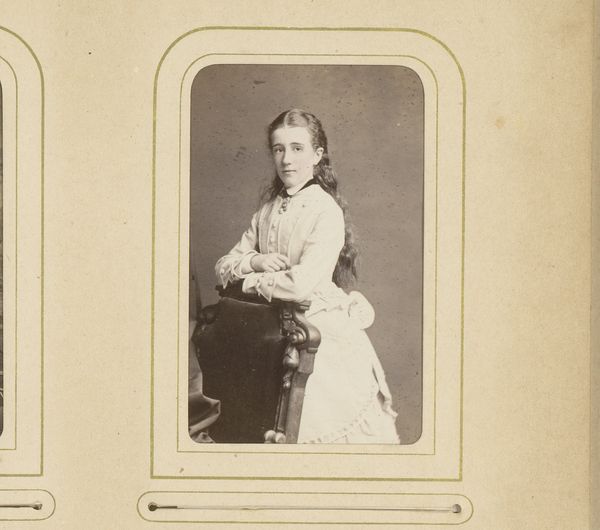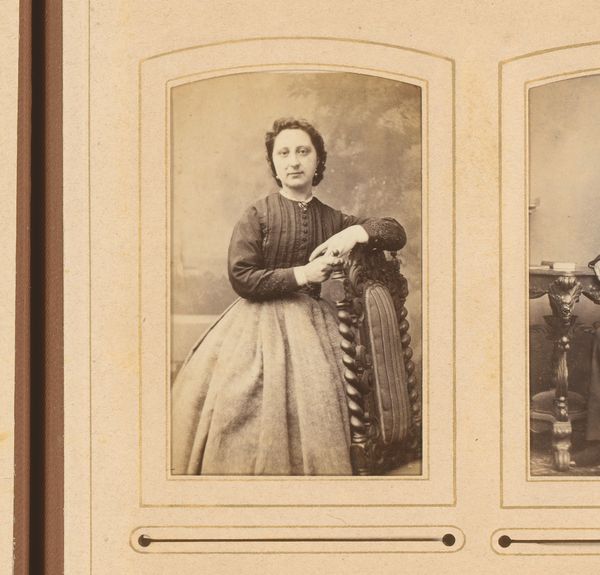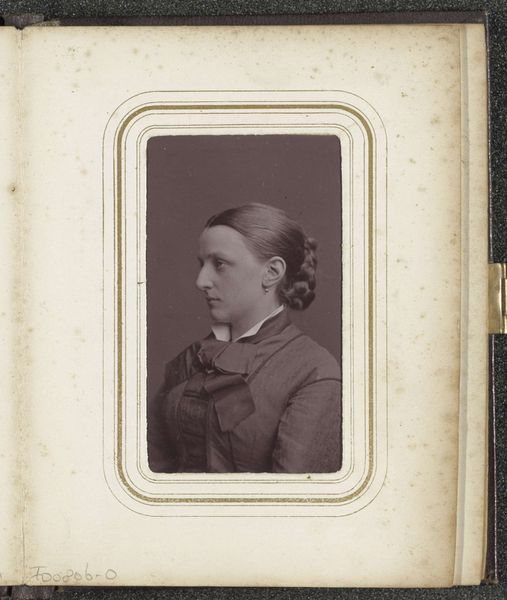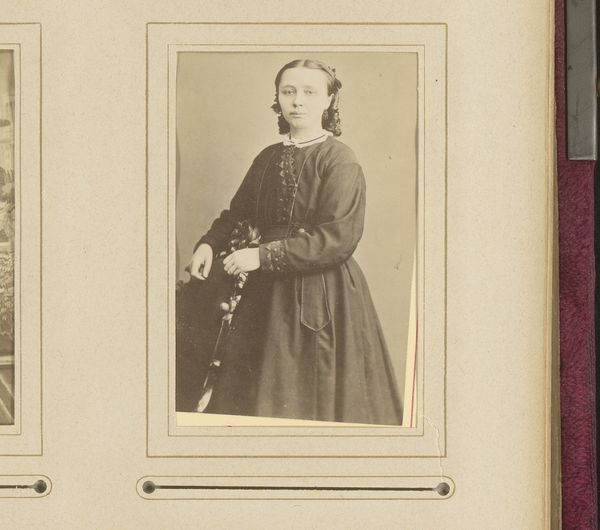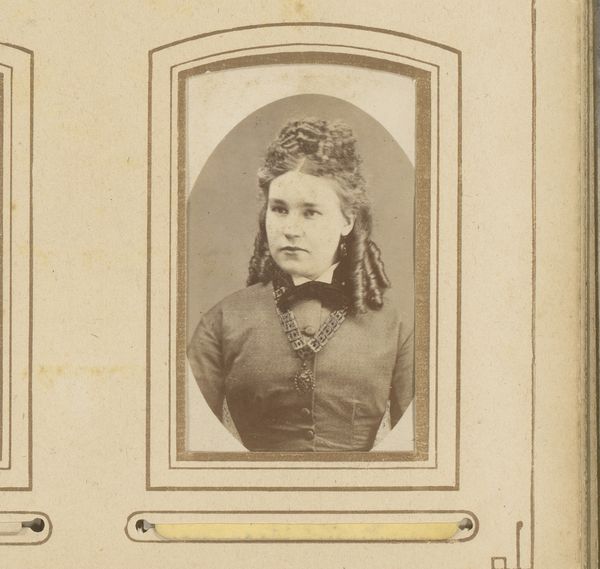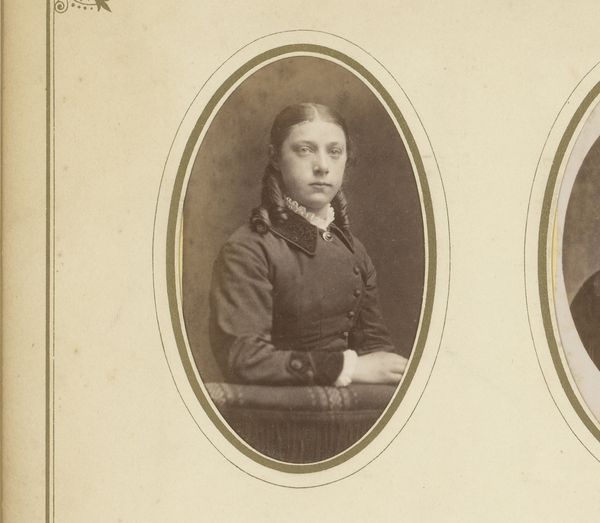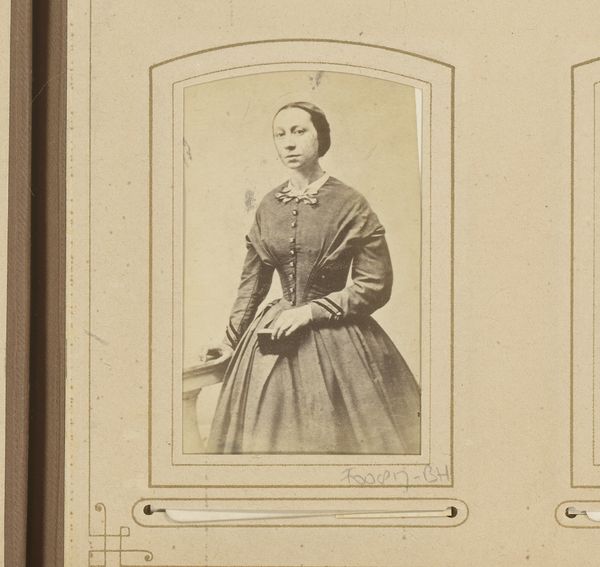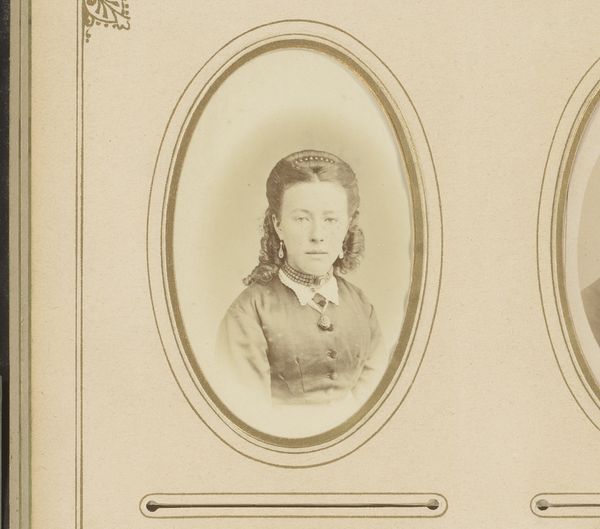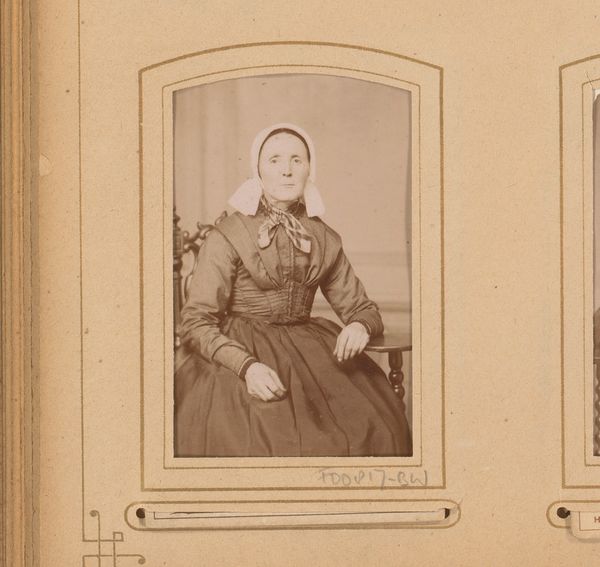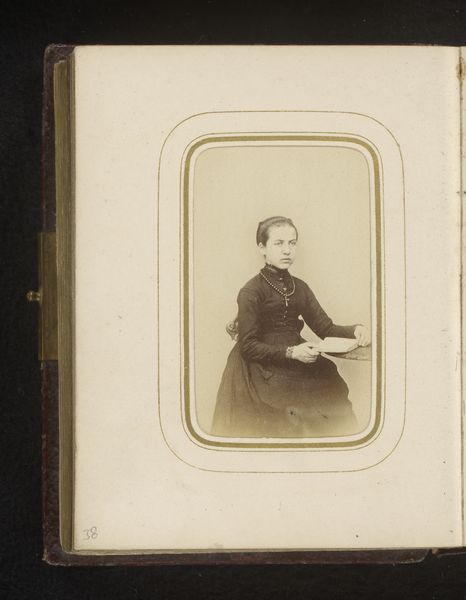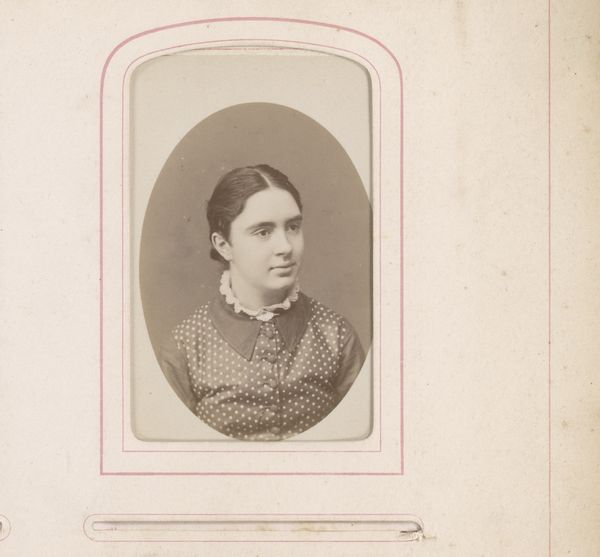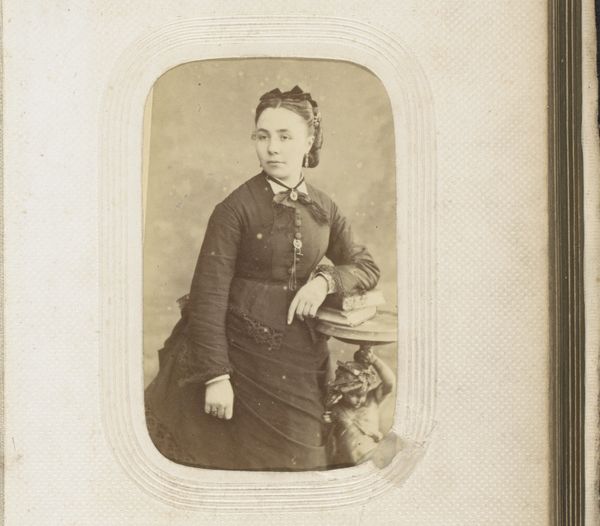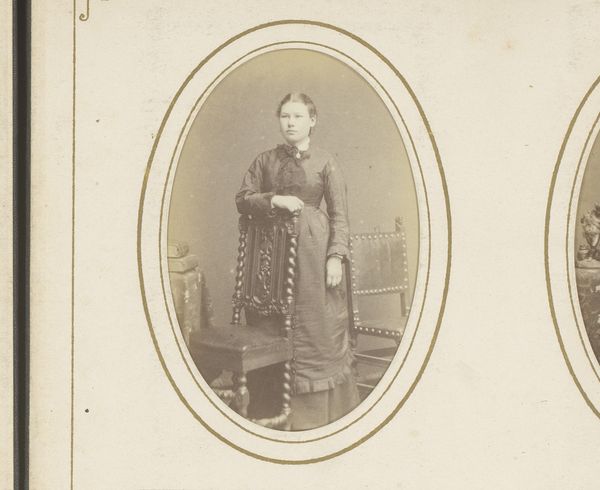
photography
#
portrait
#
photography
#
genre-painting
#
realism
Dimensions: height 82 mm, width 50 mm
Copyright: Rijks Museum: Open Domain
Curator: This gelatin silver print, simply titled "Portret van een staand meisje, leunend op de leuning van een stoel," was produced by A. Böeseken between 1858 and 1890. It presents an interesting study in realism. Editor: The first thing that strikes me is the tonal range. Such delicate gradations of grey render an unexpectedly serene atmosphere despite the somewhat stiff pose of the sitter. Curator: Precisely. That atmospheric quality might be read against the grain of dominant photographic portraiture from this period, often purposed to signify societal status. Here, though the sitter is framed formally, the overall effect leans towards a quiet reflection on burgeoning adulthood. The details of dress are visible, yet without excessive embellishment—indicative perhaps of evolving class dynamics. Editor: Consider the structural tension as well. The slight tilt of her head contrasts with the stable, vertical lines of the backdrop, implying movement frozen in time. Her braid mirrors the verticality but provides a soft, humanizing counterpoint. Curator: I agree. And that braid itself speaks volumes. Hair, particularly in young women, functions as a key site of cultural messaging. A tightly controlled style may reflect restrictive social expectations imposed upon women during the late nineteenth century. Editor: And those expectations inevitably affect the photographic representation, framing the girl's self-presentation for the presumed viewer. The subdued, nearly monochrome palette enhances the formality of the piece, underscoring the medium's claim to realistic depiction. Curator: It makes one contemplate the performative aspect of portraiture – how does an individual construct an identity for public consumption while adhering to the prescribed notions of gender and respectability? Even in apparent realism, a dialogue is created between what is captured, and the sociocultural environment shaping that captured moment. Editor: Seeing the work through that frame clarifies a compelling duality. We're confronted with a realistic rendition, and yet, by carefully considering her position, dress, and expression, it becomes possible to interpret an undercurrent of social complexities. Curator: It allows us to appreciate not merely the captured image but its intricate place within history, compelling an awareness of our continued negotiations with representation.
Comments
No comments
Be the first to comment and join the conversation on the ultimate creative platform.
